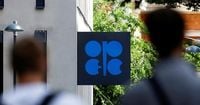The global oil market is once again in the spotlight as OPEC+—the powerful alliance of oil-exporting nations led by Saudi Arabia and Russia—announced a temporary halt to planned production increases for the first quarter of 2026. This strategic pause, confirmed in early November 2025, has sent ripples through the energy sector, with major implications for producers, consumers, and the broader world economy.
The announcement came on the eve of the Abu Dhabi International Petroleum Exhibition and Conference, one of the industry's most influential gatherings. There, officials and energy executives offered a bullish outlook on future demand, fueled by the rise of artificial intelligence and booming global aviation. Yet, the optimism in Abu Dhabi stood in stark contrast to OPEC+'s cautious market management, as leaders weighed the risks of oversupply against the need to support prices and navigate escalating geopolitical tensions.
According to the Associated Press, Sultan al-Jaber, head of the state-run Abu Dhabi National Oil Co. and a key figure in the recent COP28 climate talks, argued that the energy market requires "reinforcement, not replacement." His comments echoed a sentiment widely shared among OPEC+ members: the world may be talking about energy transition, but demand for oil is not going away anytime soon.
OPEC+ had previously agreed to ramp up production by 2.9 million barrels per day (bpd) throughout 2025, aiming to restore roughly half of the 5.85 million bpd cut during the pandemic and other periods of extreme volatility. However, real-world output gains lagged behind targets, reaching only 70-75% of the planned increase, a shortfall attributed to logistical challenges and existing oversupply in global markets. In a compromise move, the group approved a modest production bump of 137,000 bpd for December 2025, with all further increases for January through March 2026 now on hold.
The pause was most vigorously championed by Russia, which faces mounting Western sanctions targeting energy giants such as Rosneft and Lukoil. Russian officials argued that the coalition needs time to assess the full impact of these sanctions before committing to further output hikes. Saudi Arabia, traditionally the alliance's swing producer, also threw its weight behind the pause, citing forecasts of substantial global inventory builds in early 2026. Both countries agreed that flooding the market with more oil at this juncture could tip the delicate balance and trigger a damaging price slump.
Market data underscores these concerns. As of early November 2025, Brent crude traded at $64.50 per barrel, while U.S. benchmark WTI hovered at $60.66—prices that closely shadow the break-even costs for American shale producers. The OPEC basket price lingered near $66.49 per barrel, reflecting broad market skepticism about the potential for supply cuts to spark a sustained rally. The modest quota increases of 2025 did little to excite traders, as unofficial supply and persistent inventory builds kept a lid on prices.
Seasonal demand patterns also played a key role in the decision. OPEC+ officials pointed to the first quarter's typical lull, marked by declining industrial activity in North America, Europe, and East Asia, reduced heating oil demand as winter fades, and scheduled refinery maintenance that cuts crude runs. Internal models and external forecasts suggest that Q1 demand often trails other quarters by as much as 1-2 million bpd, making any supply boost likely to end up in storage rather than fueling economic activity.
The Abu Dhabi summit, held just hours after the OPEC+ announcement, was a study in contrasts. While the oil cartel signaled caution, speakers at the conference painted a picture of insatiable future demand. U.S. Interior Secretary Doug Burgum, who also chairs President Donald Trump's National Energy Dominance Council, dismissed talk of an energy transition, declaring, "Today's the day to announce that there is no energy transition. There is only energy addition." Burgum criticized policies driven by "climate extremism" and argued that soaring power needs for AI and security concerns around the global AI arms race will only push energy consumption higher.
Yet, the bullish rhetoric could not entirely mask the underlying contradictions. The United Arab Emirates, a major oil producer and host of the 2023 COP28 climate summit, continues to expand its oil production capacity even as it champions clean energy at home. Qatari Energy Minister Saad Sherida al-Kaabi, speaking at the same conference, warned the European Union that Qatar could halt liquefied natural gas shipments in response to new corporate sustainability directives, highlighting the persistent tension between climate goals and energy security.
Geopolitical risks loom large over the market. The intensification of Western sanctions against Russian oil has injected fresh uncertainty, with Russian export volumes threatened by maritime restrictions and price cap enforcement. The UAE, despite maintaining close ties with Russia, has played a delicate balancing act, serving as a key interlocutor in prisoner exchanges between Kyiv and Moscow while continuing to do business with Russian firms. Meanwhile, Venezuela's exports plummeted by 26% in October 2025 to just 808,000 bpd, hampered by a lack of diluents and chronic infrastructure woes. Chevron, notably, accounted for 16% of Venezuela's total exports that month. Nigerian output remains constrained by sabotage, theft, and delayed development, while Middle Eastern tensions and shipping disruptions in the Strait of Hormuz add to the sector's risk premium.
For consumers, the OPEC+ pause is expected to offer some temporary relief—lower pump prices and heating costs, as well as moderated freight and transport expenses. For producers, however, the outlook is more complex. Margins for high-cost operations are squeezed, new extraction projects may be postponed, and upstream jobs could be at risk if prices fall further. The alliance's focus has shifted from chasing market share to defending price stability, with the $60-$70 per barrel range seen as the sweet spot for balancing profitability and demand.
OPEC+'s production management has evolved rapidly since the pandemic. After deep supply cuts in 2020-2021, the group gradually restored output as global economies reopened. The incremental quotas of 2024-2025 gave way to the current strategic pause, reflecting the need for flexibility in a market shaped by volatile demand, shifting geopolitics, and the growing influence of non-OPEC+ producers like U.S. shale and Brazil's pre-salt fields. Compliance remains a challenge, with technical limitations, financial incentives to overproduce, and infrastructure failures all contributing to a persistent gap between quotas and actual output.
The longer-term implications are profound. Flexible supply management allows OPEC+ to respond rapidly to demand swings and supply shocks, but it also complicates investment decisions for oil companies and investors. Lower oil prices can delay the transition to alternative energy, as returns on renewables become less attractive and governments may face pressure to scale back subsidies. For industry players, the message is clear: focus on operational efficiency, re-evaluate capital spending, and diversify across the energy value chain to weather ongoing volatility.
As OPEC+ pivots to a more adaptive strategy, its ability to hold a unified line in the face of external shocks and internal disagreements will be tested. The world is watching to see whether this new era of agile market management can deliver the stability both producers and consumers crave in an increasingly complex energy landscape.


